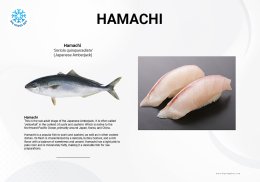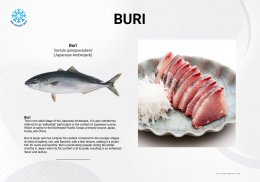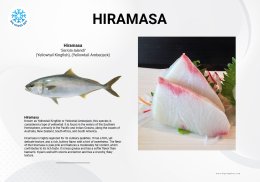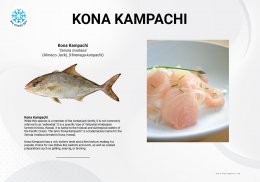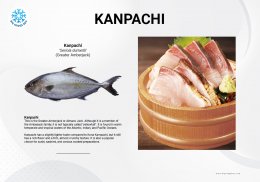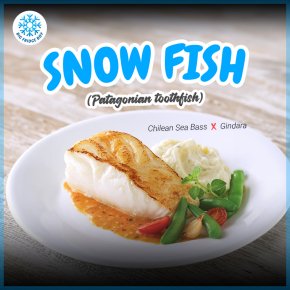5 Amberjack You Should Know: "Hamachi, Buri, Hiramasa, Kona Kampachi, and Kanpachi"
Last updated: 27 Apr 2023 | 19495 Views |
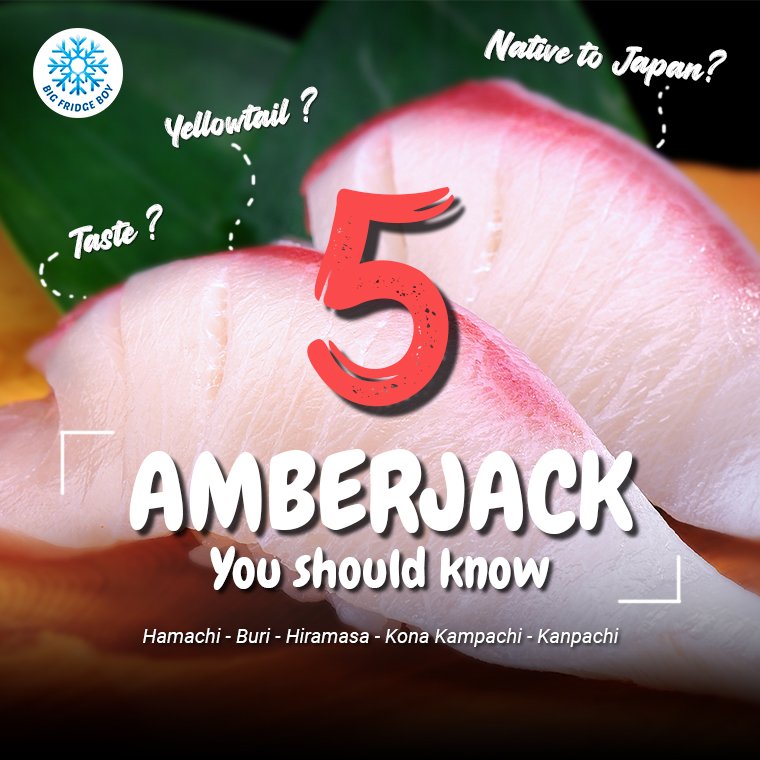
You might be familiar with words like Hamachi, Buri, Hiramasa, Kona Kampachi, and Kanpachi if you frequent sushi and sashimi bars. Nonetheless, this terminology could cause confuse to someone who doesn't frequently visit these establishments. To order sushi wisely, it's essential to be aware of the many varieties of fish that are offered.
Hamachi, Buri, Hiramasa, Kona Kampachi, and Kanpachi.These are all fish species with names in the Jack family. One or more of these types are frequently offered at sushi restaurants and are marketed as yellowtail or Japanese yellowtail. Customers and staff at sushi restaurants frequently believe that they are all the same species of fish and may all be used interchangeably. Yet, this is untrue. You need to look at their scientific names and separate them in order to understand this problem.

Hamachi (Seriola quinqueradiata), (Japanese Amberjack)
Hamachi (Japanese: はまち or ハマチ) is a term used in Japan to refer to the sub-adult stage of the Japanese Yellowtail, or more specifically, the Japanese Amberjack (Seriola quinqueradiata).
This fish belongs to the Amberjack family and is native to the Northwest Pacific Ocean, primarily around Japan, Korea, and China.
In Japanese cuisine, different names are used to describe the Japanese Yellowtail based on its stage of development:
- Inada or Wakashi: Juvenile stage (less than 1 year old)
- Warasa or Hamachi: Sub-adult stage (approximately 1-3 years old)
- Buri: Adult stage (3 years and older)
Hamachi is a popular fish in sushi and sashimi, as well as in other cooked dishes. Its flesh is characterized by a delicate, buttery texture, and a rich flavor with a balance of sweetness and umami. Hamachi has a light pink to pale color and is moderately fatty, making it a desirable fish for raw preparations.
Apart from sushi and sashimi, Hamachi can be prepared in various ways, such as grilling, broiling, or simmering in traditional Japanese dishes like teriyaki or shabu-shabu. Hamachi is also cultivated in aquaculture, ensuring a sustainable and consistent supply of this sought-after fish for the seafood market.
To conclude, Hamachi is the sub-adult stage of the Japanese Amberjack. It is often called "yellowtail" in the context of sushi and sashimi. Which is native to the Northwest Pacific Ocean, primarily around Japan, Korea, and China.

Buri (Seriola quinqueradiata) (Japanese Amberjack)
Buri (Japanese: 鰤) is a type of wild fish, also known as Japanese Amberjack or "mature hamachi". The name "buri" specifically refers to fish that are over 3 years old, but it can also be used to describe wild amberjack of any age.
Buri is larger and has a higher fat content compared to the younger stages. Its flesh is buttery, rich, and flavorful, with a firm texture, making it a prized fish for sushi and sashimi. Buri is particularly popular during the winter months in Japan when its fat content is at its peak, resulting in an enhanced flavor and texture.
To conclude, Buri is the adult stage of the Japanese Amberjack. It is also sometimes referred to as "yellowtail," particularly in the context of Japanese cuisine. Which is native to the Northwest Pacific Ocean, primarily around Japan, Korea, and China.
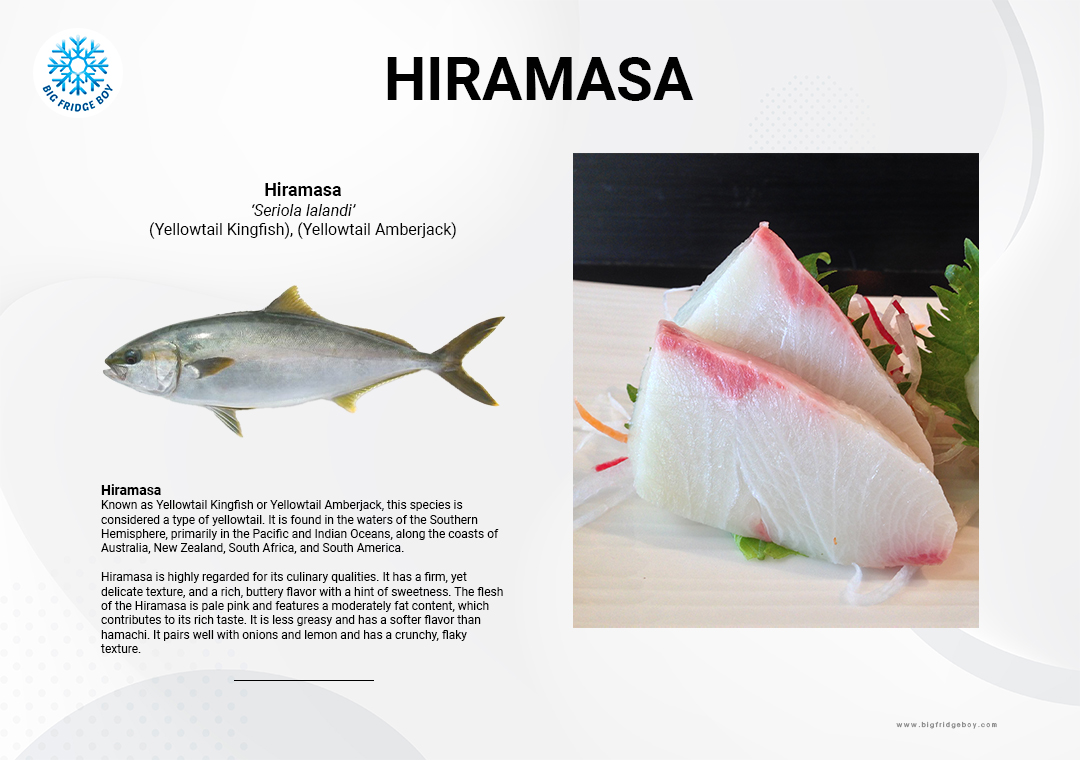
Hiramasa (Seriola lalandi), (Yellowtail Kingfish), (Yellowtail Amberjack)
Hiramasa (Japanese: 平政 or ヒラマサ) also known as the Yellowtail Kingfish or the Yellowtail Amberjack, is a fish species belonging to the Amberjack family. It is found in the waters of the Southern Hemisphere, primarily in the Pacific and Indian Oceans, along the coasts of Australia, New Zealand, South Africa, and South America.
Hiramasa is highly regarded for its culinary qualities. It has a firm, yet delicate texture, and a rich, buttery flavor with a hint of sweetness. The flesh of the Hiramasa is pale pink and features a moderately fat content, which contributes to its rich taste. It is less greasy and has a softer flavor than hamachi. It pairs well with onions and lemon and has a crunchy, flaky texture.
Hiramasa is popular in various cuisines, especially Japanese, where it is often used in sushi and sashimi dishes. It can also be enjoyed in other preparations, such as grilled, pan-seared, or broiled. Its versatility and desirable taste have made Hiramasa a sought-after fish in both domestic and international seafood markets.
In recent years, aquaculture operations have started farming Hiramasa to meet the growing demand for this fish, ensuring a sustainable and consistent supply.
To conclude, Hiramasa known as Yellowtail Kingfish or Yellowtail Amberjack, this species is considered a type of yellowtail. It is found in the waters of the Southern Hemisphere, primarily in the Pacific and Indian Oceans, along the coasts of Australia, New Zealand, South Africa, and South America.
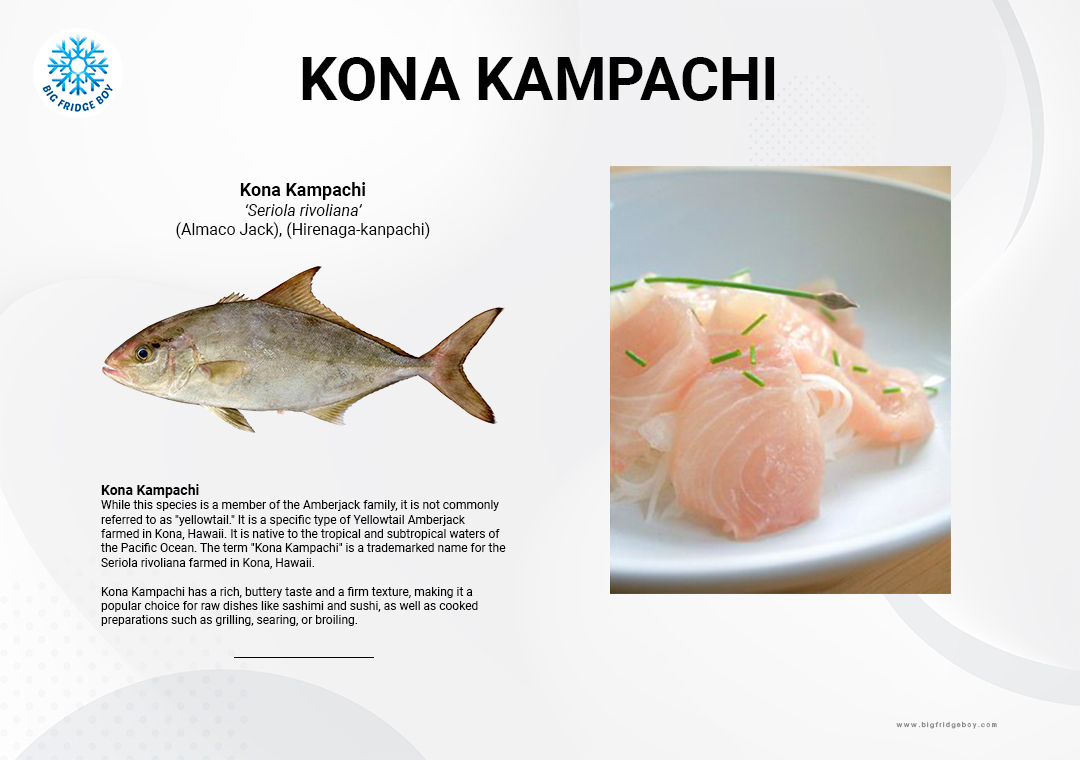
Kona Kampachi (Seriola rivoliana), (Almaco Jack), (Hirenaga-kanpachi)
Kona Kampachi (Japanese: コナカンパチ) is a specific type of Almaco Jack that is native to the tropical and subtropical waters of the Pacific Ocean. The name "Kona Kampachi" is actually a trademarked term coined by Blue Ocean Mariculture, a fish farm located in Kona, Hawaii. They raise these fish sustainably in open ocean pens, providing a reliable and environmentally friendly source of high-quality fish for the seafood market.
Kona Kampachi has a rich, buttery taste and a firm texture, making it a popular choice for raw dishes like sashimi and sushi, as well as cooked preparations such as grilling, searing, or broiling.
To conclude, Kona Kampachi is a member of the Amberjack family, it is not commonly referred to as "yellowtail." It is a specific type of Yellowtail Amberjack farmed in Kona, Hawaii. It is native to the tropical and subtropical waters of the Pacific Ocean. The term "Kona Kampachi" is a trademarked name for the Seriola rivoliana farmed in Kona, Hawaii.
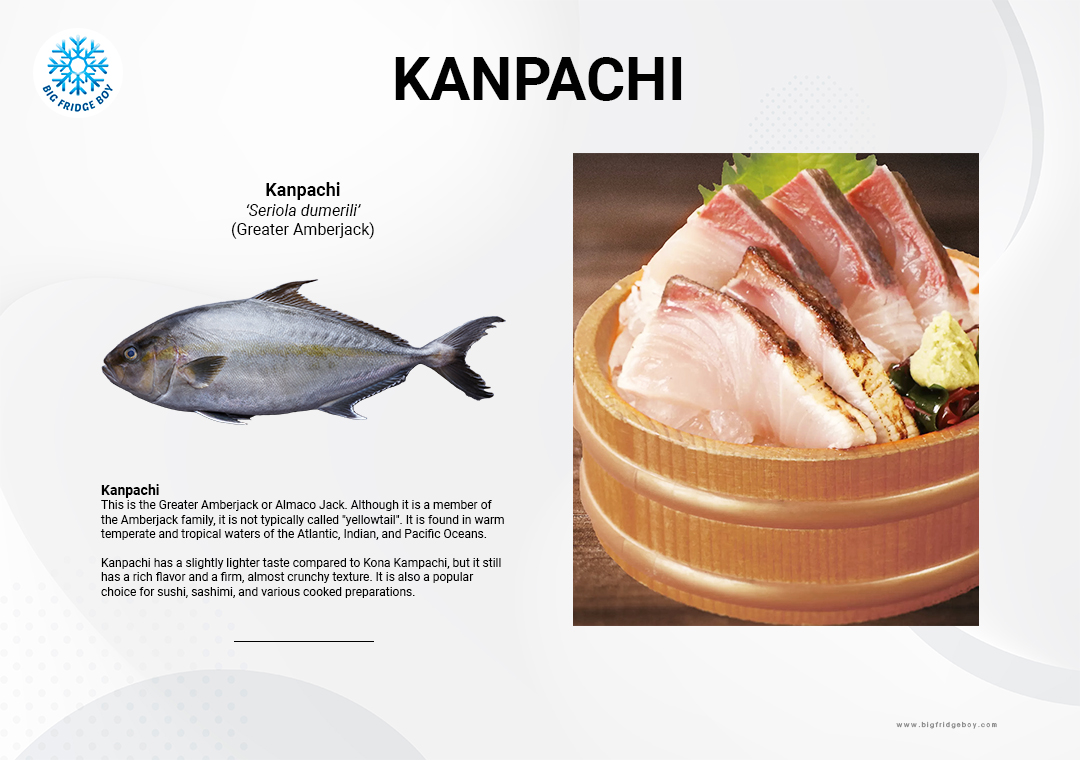
Kanpachi (Seriola dumerili), (Greater Amberjack)
Kanpachi (Japanese: 環八 or カンパチ) also known as Greater Amberjack, is another species of fish from the Amberjack family. It is found in warm temperate and tropical waters of the Atlantic, Indian, and Pacific Oceans. In Japan, "Kanpachi" is a term used to describe the fish when it is served in sushi or sashimi, while the fish is often called "Amberjack" in other contexts.
Kanpachi has a slightly lighter taste compared to Kona Kampachi, but it still has a rich flavor and a firm, almost crunchy texture. It is also a popular choice for sushi, sashimi, and various cooked preparations.
Similar to Hamachi and Buri. The different sizes of Kanpachi that are referred to by different names can vary depending on size and which prefecture of the market it is sold in. Kanpachi, for instance, might go by a different name in the Kochi prefecture.
- Shio or Chiki : Juvenile stage (less than 1 year old). They may weigh less than 1 pound.
- Akahata or Nairi : Sub-adult stage (approximately 1-2 years old). They may weigh between 1-5 pounds.
- Gata or Kojio: Sub-adult stage (approximately 2-3 years old). They may weigh between 5-15 pounds.
- Akahana or Ooshio : Adult stage (3 years and older). They may weigh more than 15 pounds and are considered the largest and most mature stage of the fish.
To conclude, Kanpachi the Greater Amberjack or Almaco Jack. Although it is a member of the Amberjack family, it is not typically called "yellowtail". It is found in warm temperate and tropical waters of the Atlantic, Indian, and Pacific Oceans.
In summary, Hamachi, Buri, and Hiramasa are the ones most commonly referred to as "yellowtail," while Kona Kampachi and Kanpachi are not usually called "yellowtail," despite being part of the Amberjack family. Only Hamachi and Buri, which are different life stages of the Japanese Amberjack (Seriola quinqueradiata), are native to Japan. Hiramasa, Kona Kampachi, and Kanpachi are not native to Japan, but they can still be found in Japanese cuisine due to their desirable characteristics and culinary applications.

